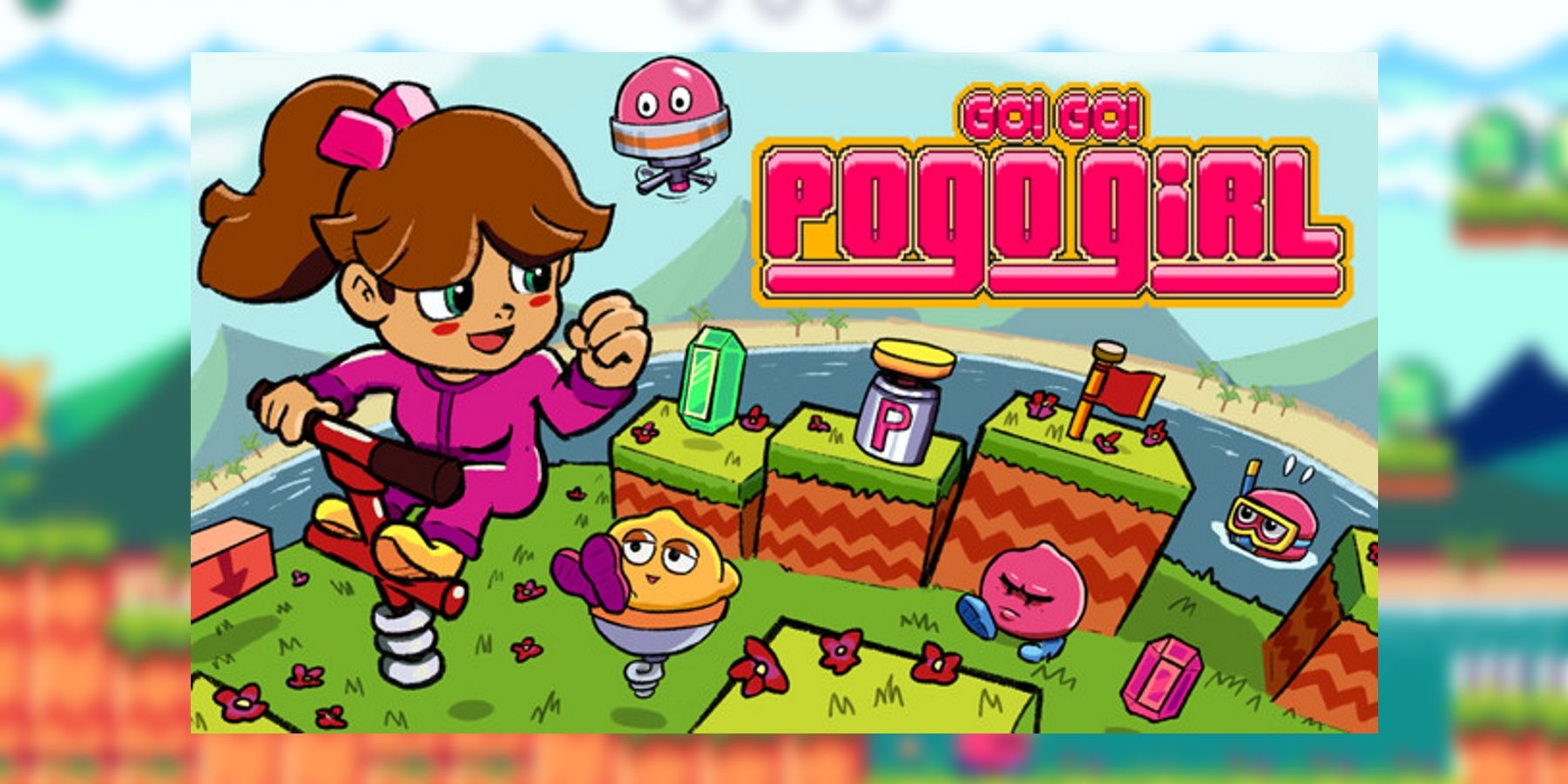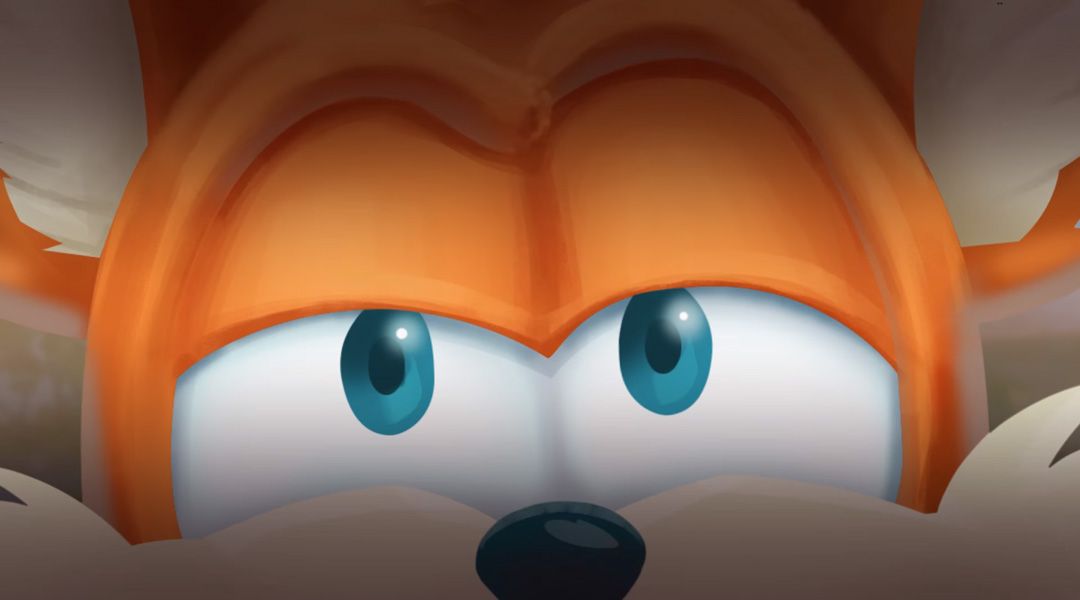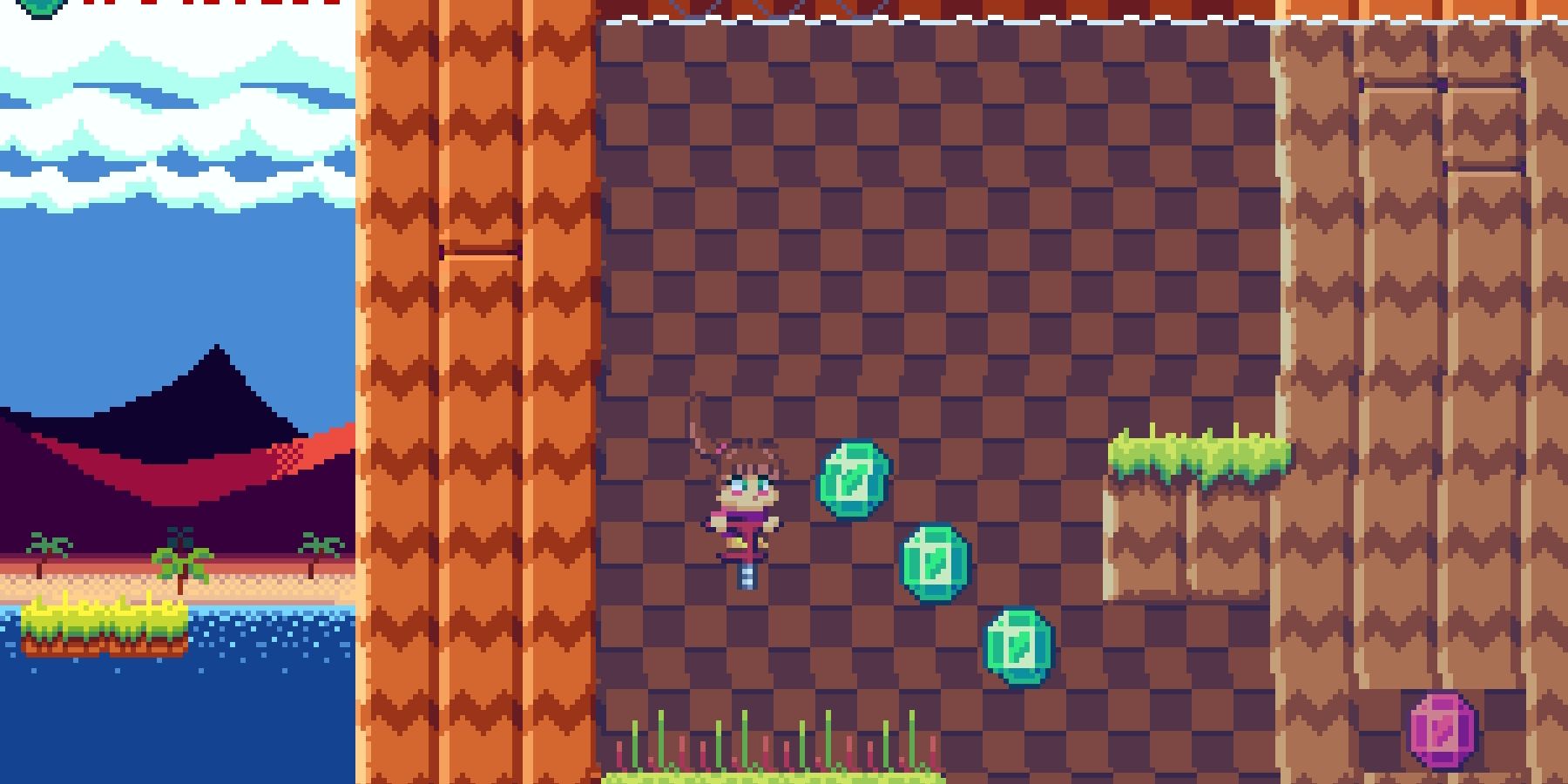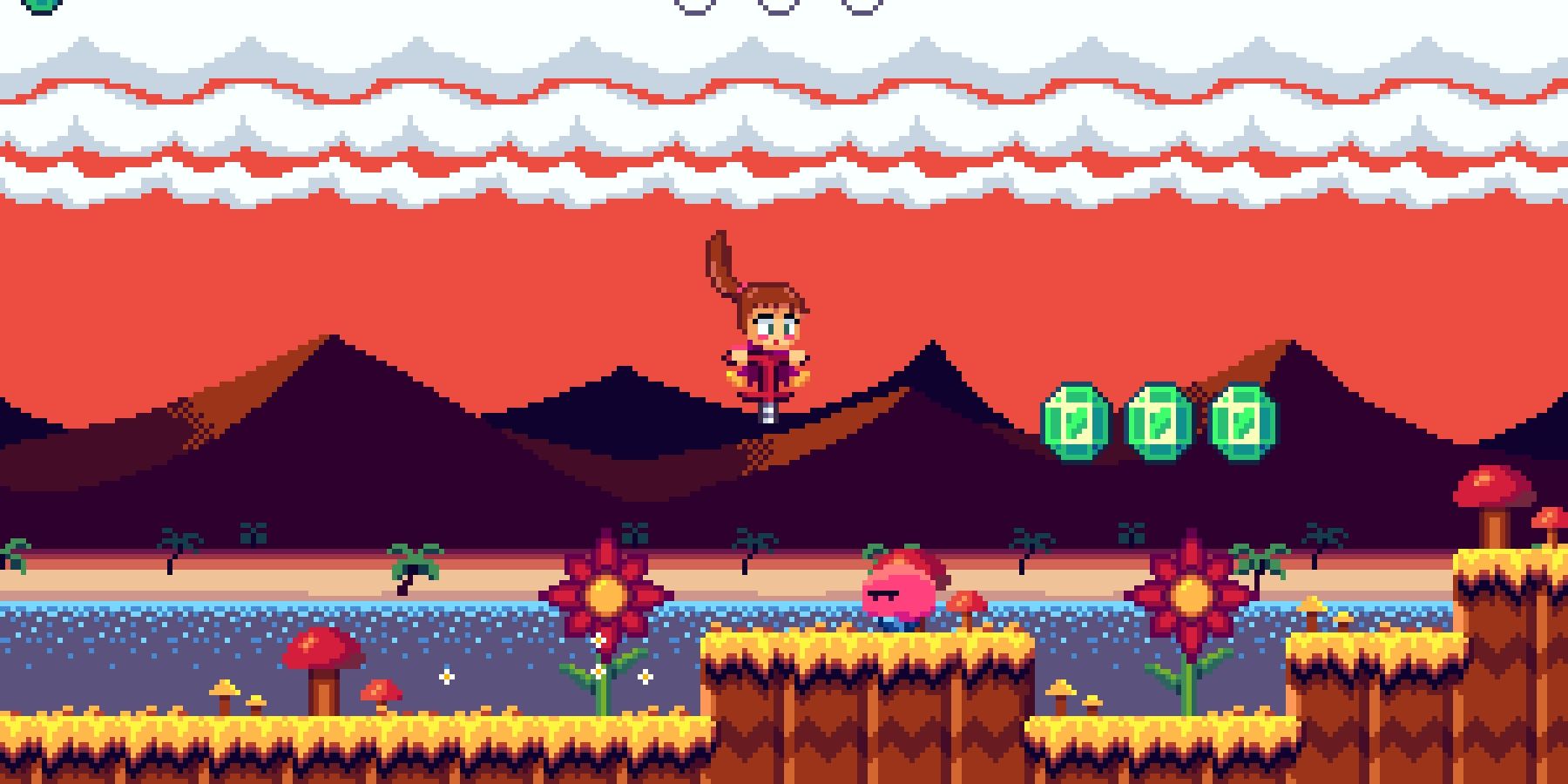Go! Go! PogoGirl is an upcoming 2D platformer that harkens back to Dreamcast classics like Sonic Adventure in many ways. In fact, its demo was originally posted on the Sonic Amateur Games Expo forum in 2021. A lot of the games on that forum are incredibly diverse in terms of design, but they all tend to have one thing in common: They care about how players get around.
Andrej Preradovic, PogoGirl's sole creator, is a developer who knows about movement. Since his childhood, he said he has repeatedly been told he's "gotta go fast" throughout the various Sonic the Hedgehog games that influenced Go! Go! PogoGirl. In an interview with Game Rant, Preradovic discussed how he learned from these classic platformers when crafting the movemement of Go! Go! PogoGirl.
How Bad Movement Can Break Games
According to Preradovic, one of the things that really captured his imagination about the original Sonic games was that "the gameplay was just so fluid, dynamic, action-packed and unique," making it stand out above others he found influential like Castle of Illusion.
"It was chaotic, sure, but it fit together so well. It was a perfect synthesis of the scrolling gameplay and the super fast graphics that wormed its way into my mind and has influenced everything I've made since."
Back when it released, no game really played with the same pace as Sonic. Even classic titles like Super Mario Bros., which were fairly well-paced, had nothing on the speed of Sonic. This high-speed character movement does not always benefit games that feature it, however. Preradovic used Bubsy in: Claws Encounters of the Furred Kind to illustrate why just going fast can't be enough.
The core problem that platformer developers need to avoid, according to Preradovic, is that "if the movement sucks, so will the game." Preradovic's core design philosophy when building his indie games is that "player movement is basically the bread-and-butter of platformers." Bubsy's jumping mechanics do not quite cohere to the rest of the game as smoothly, by contrast. "It’s got Sonic’s speed, but nowhere near as good level design. So, you just run to an obstacle and you’re dead," he said.
How 3D Sonic Games Influenced Go! Go! PogoGirl
While some more recent entries like Sonic Mania went back to the 2D formula, the Sonic series has spent a lot of time experimenting with different ideas to varied results. One of these was 2008's Sonic Unleashed. A large portion of the game is spent with Sonic transformed into a hulking "were-hog" figure that ran through slow, combat-heavy sections set at night. Preradovic said the failure of these moments heavily influenced Go! Go! PogoGirl.
"The were-hog thing, aside from just being a bit weird, was pretty much a slog gameplay-wise. The daytime stages, the music, and the general flow of regular Sonic gameplay, however, was pretty much perfect. So while I get why some people didn’t like it, I thought it had its moments."
That's why for Go! Go! PogoGirl, the aim was to "to sit down and properly match the game’s level design to its speed." Like a lot of great indie platformers, its gameplay revolves around one core mechanic; in this case, bouncing. The eponymous pogo stick is there from the very beginning, and ensures there is no static moment like the belabored were-hog sections of Sonic Unleashed.
The Spring in Go! Go! PogoGirl's Step
As one might expect from a designer who cares so much about how characters move, it's a core concern in Go! Go! Pogogirl and the other titles developed by Ohsat Games. Like many indie platformers (including Super Meat Boy and Celeste), PogoGirl encourages a constant forward momentum from the player, balanced with a little bit exploration.
One unexpected consequence of this constant bouncing was that it removed a common platformer mechanic from Go! Go! PogoGirl. "Most games have left/right movement and a jump. If, like in PogoGirl, you’re always bouncing, part of that is done for you," Preradovic said. While platformers like Super Meat Boy give players full control of jumps, that's not possible in this title. So, Preradovic added the exploration elements to make sure that however fast players can go in the game, they're never bored.
This addition almost certainly led to PogoGirl's popularity. On the Sonic Amateur Games Expo forums, the game has had several thousand views, with fully positive ratings and a fair few excited fans commenting on how polished the demo feels. It looks like it may capture a lot of the joy of classic Sonic games, with a fair few fun tricks of its own.
Go! Go! PogoGirl is currently in development for PC.




